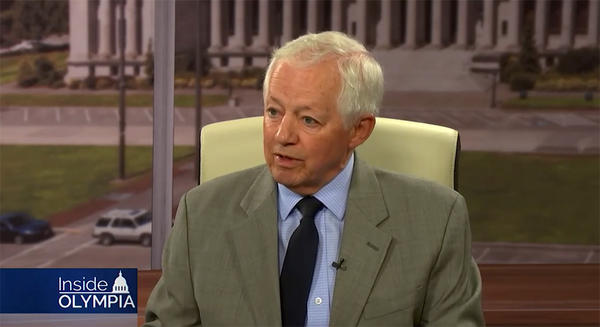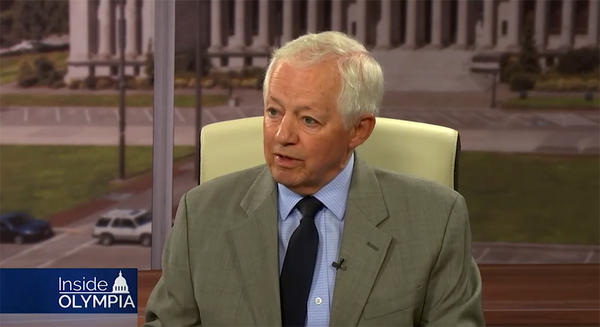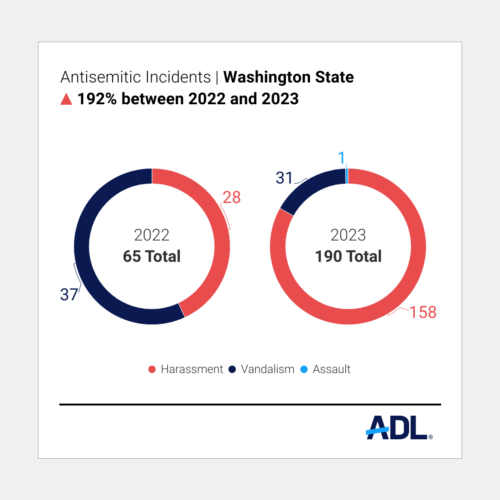
Uncertainty, Double-Digit Increases Plague Washington’s Individual Health Insurance Market
Listen
People who buy individual health insurance in Washington state can expect another round of rate hikes next year.
“I’d say double-digit [increases] are almost a certainty,” state Insurance Commissioner Mike Kreidler said in an interview Thursday on TVW’s “Inside Olympia” program.
This follows an average 13 percent increase in rates in 2017.
In June, health insurers proposed rate hikes for 2018 of between 12.9 percent and 38.5 percent, or an average 22 percent. Since then, Kreidler, whose office approves rate increases, has been working with insurers to get that number down.
Market uncertainty
The 2018 rates were supposed to be released on September 14 but have been delayed until late October, according to the Office of the Insurance Commissioner.
Open enrollment for the state’s healthcare exchange begins on November 1. About 350,000 people get their health coverage on the individual market in Washington. Eleven companies have filed to offer 71 health plans across Washington in 2018.
Kreidler, a Democrat, blames the rate increases on uncertainty in the health insurance market. Specifically he points to ongoing efforts in the Republican-led Congress to repeal the Affordable Care Act and President Donald Trump’s threat to end federal subsidies that help reduce out-of-pocket expenses for people who buy individual health insurance.
More than 60 percent of Washington enrollees qualify for those subsidies, also known as cost-sharing reductions, based on their income. Those payments are used to offset the cost of deductibles and co-pays.
According to Kreidler’s office, insurance companies have said they would cut their proposed premium increases by five to 16 percent if the federal subsidies were guaranteed.
Premera Blue Cross, the largest health plan in the Northwest, proposed to increase rates by nearly 28 percent next year, following a 19 percent hike this year. A company spokeswoman said uncertainty in Washington, D.C. is fueling those increases, but medical and pharmacy costs are also playing a role.
“We continue to see the rising cost of care is definitely a factor in our rate increases,” Premera’s Melanie Coon said. “We have a lot of high medical costs in our pool.”
Washington state’s proposal
Earlier this month, Kreidler testified with other state insurance commissioners before the U.S. Senate Committee on Health, Education, Labor and Pensions. He urged the committee to make the cost-sharing reduction payments permanent and to create a federal reinsurance program to reimburse insurers for higher than expected costs.
U.S. Sen. Patty Murray of Washington is the ranking member on the Senate healthcare committee and has been working with its chair, Republican Lamar Alexander of Tennessee, on a bipartisan health care bill. But that effort has been eclipsed in recent days by the latest Republican proposal to repeal the Affordable Care Act.
This week, Kreidler and Governor Jay Inslee sent a letter to the state’s congressional delegation urging opposition to the Republican proposal, from Sen. Lindsey Graham of Florida and Sen. Bill Cassidy of Louisiana. Their plan would replace Obamacare with a block grant program that would expire in 2026.
“In many ways, this effort is more damaging than earlier proposals,” Kreidler and Inslee wrote in their letter. “It decimates Medicaid, seriously diminishes coverage, and exposes people with pre-existing conditions to huge premium increases.”
The letter said the Republican proposal would cost Washington residents over $10 billion in lost federal health care spending and tax credits between 2020 and 2026 and $7.5 billion in 2027 after the block grant program ends.
“Because it is extremely unrealistic to assume that the state could fill that funding gap, hundreds of thousands of people would lose coverage,” they wrote.
Is the individual market headed for collapse?
Historically, the market for individual health insurance has been volatile. For insurers it’s a riskier and more expensive line of business compared to group plans. In the late 1990s Washington state’s individual insurance market collapsed after key portions of a state-level health care reform law were repealed.
Kreidler said he’s concerned about a repeat of that.
“I feel it in my bones right now that you just can’t keep going like this with this degree of uncertainty and count on keeping insurers,” he said.
He added that if one or two major insurers were to abandon the individual market, “you’re going to see a stampede for the door.”
Over the summer, Kreidler’s office had to scramble when insurers pulled out of Grays Harbor and Klickitat counties, leaving customers there without any insurance option. That situation has since been resolved, but Kreidler is concerned it’s a harbinger of what’s to come. He noted that in nine of Washington’s 39 counties there’s only one insurance company offering individual coverage.
In addition to lobbying Congress, Kreidler is exploring several “market stability” proposals to take to the Washington Legislature in January. Those include offering a public insurance option, allowing people in the state’s costly high risk pool to qualify for tax credits and creating a state reinsurance program.
Alaska has a reinsurance program, and this year Premera, the sole insurer in the individual market there, proposed an average rate decrease of 26.5 percent for 2018.
“We think that makes a strong case for having similar solution in Washington state,” Coon said.
9(MDAyNTQ1NzQ1MDEyMjk0OTcxNTI4MzljZQ001))
Related Stories:

Concejo elimina Downtown Pasco Development Authority
El Concejo de Pasco decidió por unanimidad disolver Downtown Pasco Development Authority (la autoridad encargada del desarrollo del centro de la ciudad), durante una reunión ordinaria celebrada el pasado 15 de abril. Continue Reading Concejo elimina Downtown Pasco Development Authority

Pasco City Council dissolves Downtown Pasco Development Authority
The Pasco City Council unanimously decided to dissolve the Downtown Pasco Development Authority, after a public hearing this week. The Authority had been examined for months, and a state audit questioned its administrative management. Continue Reading Pasco City Council dissolves Downtown Pasco Development Authority

Idaho doctor: Abortion access ‘integral to the practice of OB-GYN’
Idaho has one of the strictest abortion bans in the country. On April 24th, the U-S Supreme Court is scheduled to hear oral arguments in a case to decide whether Idaho’s ban violates a federal law mandating emergency care. Continue Reading Idaho doctor: Abortion access ‘integral to the practice of OB-GYN’













